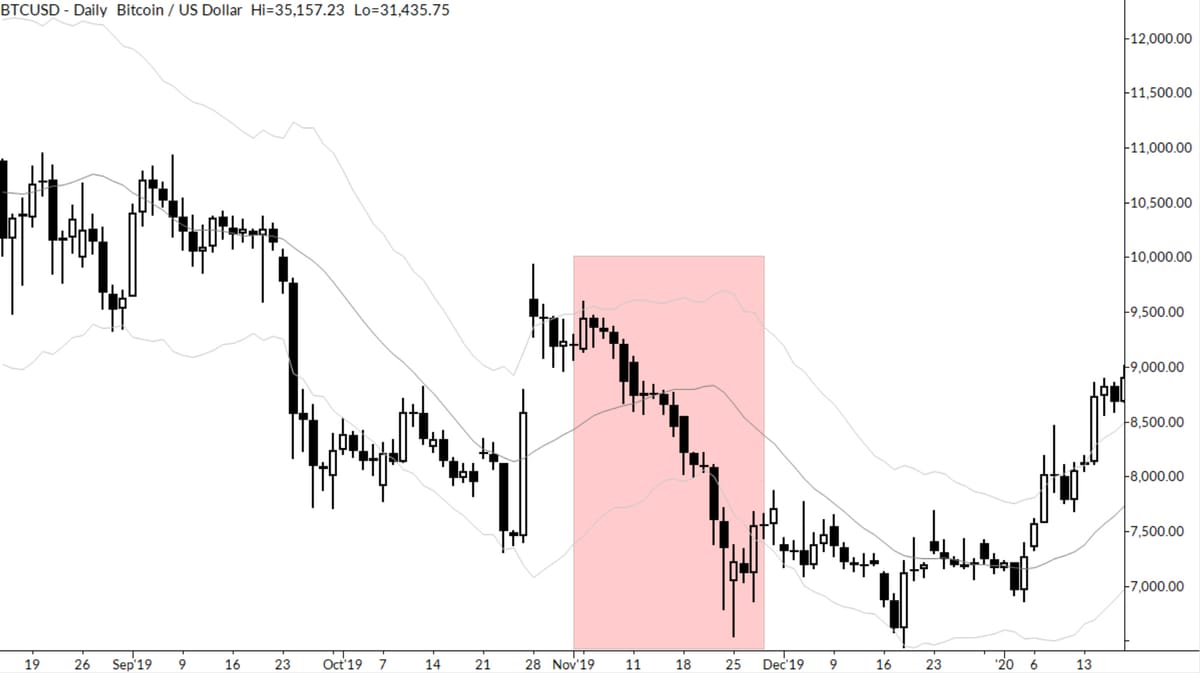Bitcoin Seasonal Influences: What Happens When a Myth Meets Data?

Yesterday, I saw someone on Facebook recommending a buy based on a moving average cross. (We already know that moving average signals are not reliable trading signals.) This person was also suggesting that we should be treating Bitcoin “like a savings account, having some cash flow go into it.”
While the idea of equating high volatility assets like Bitcoin to a savings account (confusing an essentially no-risk asset with a very high-risk trade) raises several red flags, a particular statement stood out to me: “people LOVE buying Bitcoin as Thanksgiving and Christmas approach (historically).” That is a testable assertion, and how we think through the problem gives us a framework for untangling many questions about the market.
Thinking about seasonality
When we talk about seasonal influences we don’t just mean winter, spring, summer, and fall. It encapsulates any event or period that recurs predictably. We could look at holiday influences, first or last trading day of the month, specific influences around growing seasons for crops, etc.
There are well-established statistical methods for dealing with seasonality, and many of the economic data series we hear about are seasonally-adjusted to remove predictable aspects. A classic example would be the rise in part-time jobs during the holiday season, which is usually accounted for and adjusted in many employment reports.
But, as traders, we need to be precise. Maybe a good place to start is to think about it in terms of questions, and here’s the one that really matters:
- If I were to place a trade around a specific date, time, or season, do I have a reason to expect to make money on that trade?
Answering the question
Any time we look at anything in the market, we must know what to compare it to. Essentially, we're seeking an answer to the question, "Compared to the usual market behavior, how does this particular scenario fare?"
An easy-to-understand example is a trading system that is long-only stocks. For this system, our baseline for comparison is the buy-and-hold return over the same period. The intuition is that if I could have gotten the same or better return with one transaction, why bother with this trading approach?
It’s critical to always compare to a baseline. In statistical testing, we think of this as the unconditional return—meaning that it’s the money you would have made (or lost) holding the asset with no conditions applied.
We can then apply conditions to get the conditional return, and then compare the two. This is key: we aren’t comparing to zero, we are comparing to the usual behavior of the market.
This is difficult to do intuitively, and it’s one reason why casual chart inspection fails. But let’s start there.
Chart inspection
It’s always good to start with a look at the data. Here are charts for each of the years 2018-2022, with the time period from the beginning of November to Thanksgiving highlighted. (We might wish to go back further in time, but that’s easy to do just by visually extending the left edge of the shaded box. Seeing where the Thanksgiving holiday falls (the right edge of the box) is what really matters.)
Based on these charts, do you have some sense of market behavior? Do you think “people LOVE buying Bitcoin as Thanksgiving and Christmas approach (historically)”?
It can be hard to know what we’re seeing, so taking a quantitative look at the data is a logical next step.
Numbers tell the truth
Here are the steps I followed for a quick look at the question.
- I created a counter variable that caught the number of days before Thanksgiving. In other words, if tomorrow is Thanksgiving, this number is -1.
- I next converted BTCUSD’s daily trading history to percent changes (“returns”). Since .0013 is not a nice number to look at, I am displaying results here in basis points (which are hundredths of a percent). BTCUSD’s average daily return over this period is 13 bp. (Quick check: this annualizes to 60% a year, which seems right for the data.)
- I also created a variable called IsUp which =1 if the day was position and 0 if the day was flat or down. Averaging this variable over any time window gives us a quick measure of the percentage of positive days. BTCUSD has 50.9% positive days.
So far, we’ve established the unconditional return. We know something about how our chosen market usually trades.
Now we can grab just the 25 days before the Thanksgiving holiday. When we do this, we find that:
- The average conditional return is -13 bp (vs. +13 bp for the unconditional return).
- 45.6% of days are positive (vs. 50.9% for the whole data set).
In an actual analysis of a concept that might have some trading validity, we should go further. We should look at measures of variability and volatility, and probably would look at other windows.
In this case, the answer seems pretty clear: there is no evidence, in the time period from 2018-2022 that BTCUSD is more likely to go up in the 25 trading days before the Thanksgiving holiday. In fact, the statistical tendency is quite clearly in the opposite direction.
Thinking deeper
It also can be instructive to look at the data in different ways. Here’s a look at the average for each of N days before Thanksgiving (again presented against the unconditional return). It’s hard to make a case for a positive seasonal influence before Thanksgiving. Doing so would certainly require an appeal to something other than the data.

And, as traders, that’s all we have!
If you’re interested in really understanding how to do this work, it’s worth replicating it yourself. You should then investigate what happens before the Christmas holiday to fully check the original assertion, but you probably already have a pretty good idea what you’re going to find.



